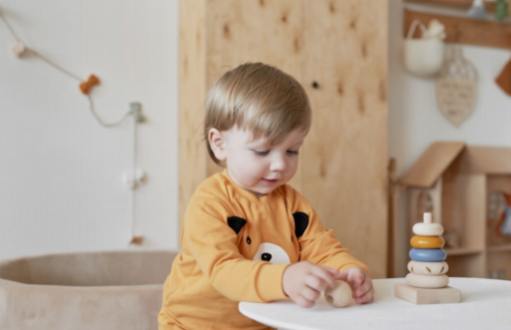As a new parent, one of the most important responsibilities you have is to create a safe and stimulating environment for your baby's physical development. Understanding your baby's physical development milestones, selecting appropriate toys and equipment, incorporating play and exercise into daily routines, monitoring and adapting to your baby's changing needs, and ensuring safety while encouraging exploration and mobility are all essential components of creating an environment that supports your baby's growth. In this article, we will explore these key aspects of creating a safe and stimulating environment for your baby's physical development.

Understanding Baby's Physical Development Milestones
Babies go through a series of physical development milestones during their first year of life. These milestones include lifting their heads, rolling over, sitting up, crawling, and eventually walking. It is important for parents to understand that each baby develops at their own pace, so it is crucial not to compare their child to others. By understanding these physical development milestones, parents can better support and encourage their baby's growth and development.
Creating a Safe Physical Environment for Growth
Creating a safe physical environment for your baby is crucial for their growth and development. It is important to ensure that the spaces where your baby spends their time are free from any potential hazards. This includes baby-proofing your home by securing furniture, covering electrical outlets, and removing any small objects that could pose a choking hazard. Additionally, it is important to keep the floors clean and clear to prevent any potential falls or accidents.
When setting up your baby's physical environment, it is also important to consider the layout of the space. This includes ensuring that there is ample space for your baby to move around and explore, as well as providing areas for tummy time and crawling. Creating a designated play area with soft, padded flooring can also help to ensure a safe space for your baby to play and explore.
In addition to baby-proofing and layout considerations, it is important to ensure that the temperature and lighting in your baby's environment are suitable for their comfort and safety. Keeping the temperature at a comfortable level and ensuring that the lighting is not too bright or too dim can help to create a welcoming and safe space for your baby to thrive.
Overall, creating a safe physical environment for your baby's growth involves careful consideration of potential hazards, thoughtful layout and design, and attention to comfort and safety details. By creating a safe and nurturing space for your baby, you can provide them with the foundation they need to thrive and develop physically.
Selecting Appropriate Toys and Equipment
When it comes to selecting toys and equipment for your baby, it's important to choose items that are not only safe, but also provide opportunities for physical development. Look for toys that are age-appropriate and designed to encourage movement and exploration. Items such as soft blocks, rattles, and textured balls can help stimulate your baby's senses and promote fine motor skills. Additionally, consider investing in a variety of age-appropriate play equipment, such as a baby gym or activity center, to provide your little one with opportunities for movement and interaction. Always ensure that any toys or equipment you choose are free from small parts or choking hazards, and are made from non-toxic materials. By selecting the right toys and equipment, you can help support your baby's physical development and create a safe and stimulating environment for growth.
Incorporating Play and Exercise into Daily Routines
Play and exercise are essential components of a baby's physical development. As a new parent, it's important to incorporate these activities into your baby's daily routine to promote their growth and motor skills. Simple activities such as tummy time, reaching for toys, and crawling help to strengthen your baby's muscles and coordination. Additionally, allowing your baby to explore their environment and engage in physical play can aid in their overall physical development. By incorporating play and exercise into your baby's daily routines, you are providing them with the opportunity to develop their motor skills and physical abilities in a safe and stimulating environment.
Monitoring and Adapting to Baby's Changing Needs
Babies grow and develop at a rapid pace, and it's important for parents to monitor their changing needs as they reach new physical milestones. As babies become more mobile and curious, they may require a different environment to support their development. This could include baby-proofing the home to ensure safety as they begin to crawl or walk, as well as providing new opportunities for exploration and play. Additionally, as babies grow, their interests and abilities may change, so it's important for parents to adapt and introduce new toys, activities, and experiences to continue stimulating their physical development. By closely monitoring and adapting to their changing needs, parents can ensure that their baby has a safe and supportive environment in which to grow and thrive.
Ensuring Safety While Encouraging Exploration and Mobility
As your baby grows and develops, it is important to provide a safe environment that allows for exploration and mobility. This means taking steps to baby-proof your home and carefully selecting toys and equipment that promote physical activity while minimizing risk. It is crucial to strike a balance between keeping your baby safe and allowing them to explore and move around freely. By being mindful of potential hazards and providing opportunities for safe exploration, you can support your baby's physical development while ensuring their safety.
